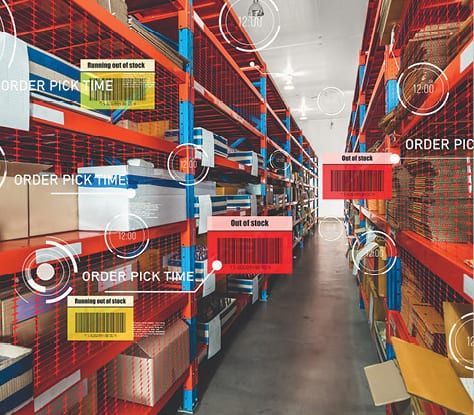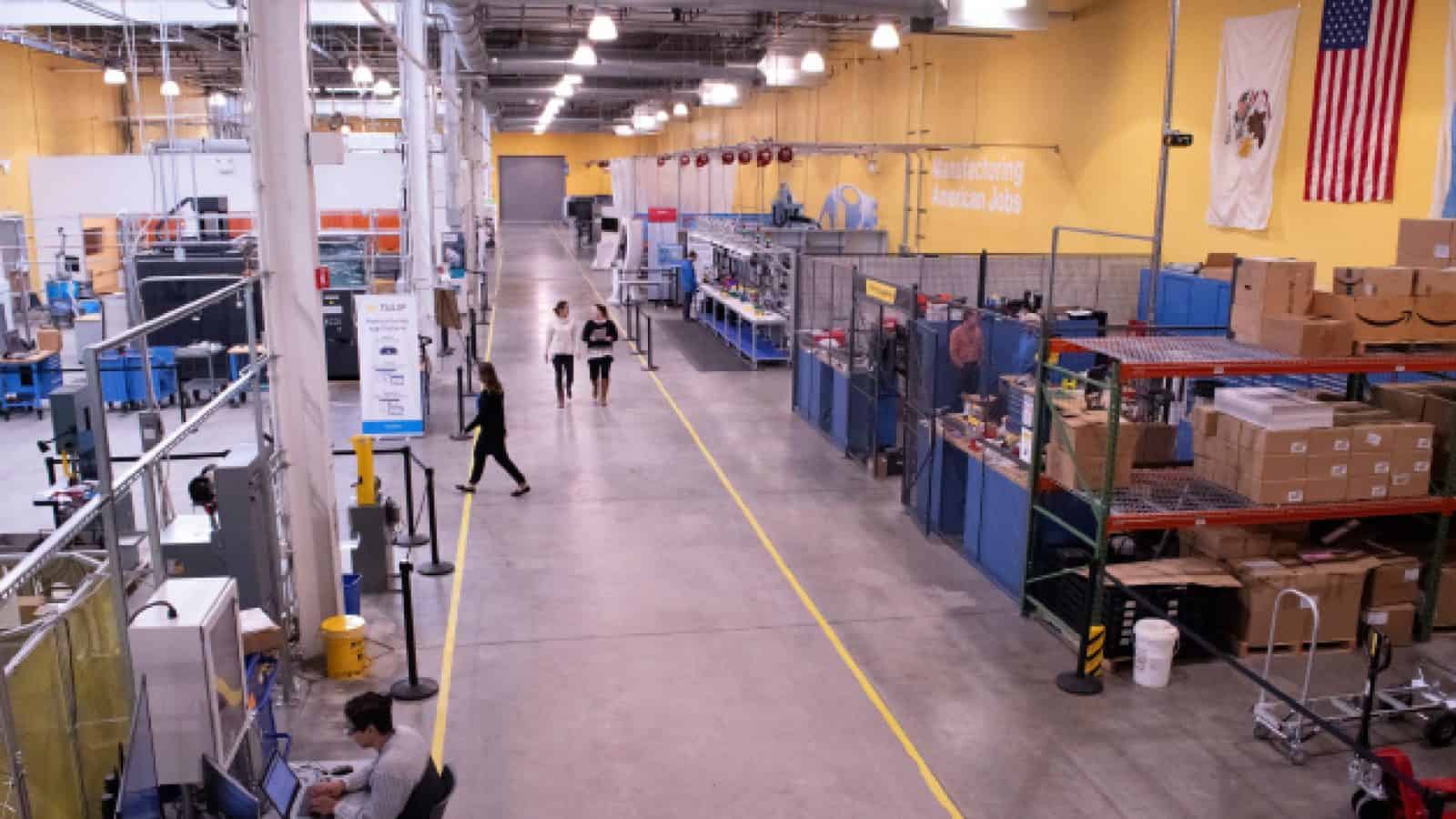Using Digitized Supply Chains to Improve Planning and Predictability

Manufacturers that integrate digital capabilities can reap benefits on the shop floor, in SIOP planning, and in third-party relationships.

TAKEAWAYS:
● Digitally enabled supply chains can save manufacturers time and money by reducing guesswork about what changes to make on the shop floor.
● Companies can also make better decisions about which suppliers to choose or the best ways to distribute and deliver their products.
● Especially when it comes to inventory planning, digitally enabled supply chains and a data-driven approach to decision-making are key.
The benefits of digitally enabled supply chains go well beyond boosting production and efficiency; manufacturers that intentionally harness advanced technologies can make their planning more accurate, demand forecasting more precise, and operations overall more predictable.
Improved predictability is especially critical at this time. As of May 2023, RSM US LLP’s chief economist put the chance of a U.S. recession at 75 percent over the following 12 months. Elevated inventory levels among industrial companies add another element of stress and potential financial risk, as RSM wrote in this June article. In this environment, supply chain visibility is of utmost importance for planning and fundamental to making more informed decisions in areas such as procurement, order allocation, expedited shipping, and avoiding costly on time in full (OTIF) penalties and accessorial fees such as demurrage and detention.
Manufacturers that integrate more digital capabilities into their supply chains can reap significant benefits on the shop floor and at other facilities, in their sales, inventory, and operations planning (SIOP), and in their relationships with third parties along those supply chains.
On-the-ground Enhancements
Industrial Internet of Things devices, digital twins, artificial intelligence (AI), and predictive data analytics are some of the technologies that manufacturers are implementing to achieve better visibility into their supply chains. That clearer picture of supply and demand will enable businesses to adjust their orders and production as needed and ultimately improve their planning and forecasting abilities, in addition to enabling customer service to better interface with transaction-level inquiries.

“Industrial Internet of Things devices, digital twins, artificial intelligence, and predictive data analytics are some of the technologies that manufacturers are implementing to achieve better visibility into their supply chains.”
Here are some examples of use cases for a handful of advanced technologies:
- Integrating smart devices such as sensors into manufacturing operations can give companies real-time awareness of product quality, the rate of production, downtime issues, necessary machine maintenance, and potential errors. That real-time information allows teams to communicate better with customers about expectations for delivery and make more informed decisions about inventory management, whether in terms of manufacturing or purchasing.
- Using digital twins enables companies to run virtual simulations of various supply chain scenarios and get a clearer picture of their supply and demand impacts. Virtual simulations can help manufacturers save time and money by cutting down on guesswork about what changes to make on the shop floor.
- Employing AI-based software can help manufacturers continually scan high-risk suppliers for potential disruptions, enabling management to pivot to alternative options.
- Using predictive data analytics, in conjunction with the other technologies described above, should include both internal company data and external economic data to improve forecasts and guide inventory, budgeting and resource decisions.
“Companies will continue to prioritize flexible, resilient supply chains, but that flexibility brings a higher cost in the form of increased inventory, more suppliers and higher input costs,” we wrote in this April article. “In thinking about what supply chains will look like in 2030, we expect AI will play a larger role in helping manufacturers manage such costs strategically, as will proximity to end markets and the increased presence of digitalization and automation. Global middle market manufacturers will need to invest in their supply chain capabilities with these factors in mind.”
With a better understanding of supply disruptions and demand changes, manufacturers can make better decisions about whether to choose an alternative supplier or the best ways to distribute and deliver their products. At a global level, this improved supply chain visibility allows businesses to hone their strategy for the next several years, adapt their operating model, and determine whether they may need to diversify their sourcing or nearshore aspects of operations.
Sales, Inventory, and Operations Planning
Beyond the shop floor, these advanced technologies and the data generated from them can enhance an existing SIOP process or serve as a foundation to implement such a process for the first time. Perhaps most critically, these technologies can improve communication among the various functions involved in that process: the sales side, supply side, inventory team, and finance team.

“With a better understanding of supply disruptions and demand changes, manufacturers can make better decisions about whether to choose an alternative supplier or the best ways to distribute and deliver their products.”
Especially when it comes to inventory planning, digitally enabled supply chains and a data-driven approach to decision-making are key. Here are four of the most critical areas of focus for businesses that want to adopt or improve their data-driven approaches to inventory management:
- Technology: Implement or optimize inventory management software and leverage data analytics and supply chain management systems to support data-driven decision-making. Predictive analytics should include both the company’s internal data and external macroeconomic real-time data.
- Collaboration: Build partnerships with suppliers, distributors, and customers to gain insights into market trends and forecast demand accurately. Optimizing shared data among third parties is ideal; but if it is unworkable, then businesses need to collaborate with suppliers more often.
- Processes: Form governance policies based on statistical analysis for key areas like reorder points, target levels, and costs by inventory segment on an ongoing basis.
- Training and change management: Technology is only a useful tool if organizations adopt a continuous improvement approach and well-trained managers monitor and measure the results. Invest in training and budget for it as part of the program cost.1
Many manufacturers struggle to figure out where to start or what to do first when it comes to integrating technologies into their SIOP process. Working with an advisor can help companies determine where they exist along the broader supply chain maturity model relative to other organizations. This analysis sheds light on how digital tools and improved processes can help manufacturers manage margins and increase predictability.
A Comprehensive View
Collaboration with external partners is a crucial element of success when implementing digitally enabled supply chains. But it’s often challenging for manufacturers to determine which digital tools will allow their trading partners to have the best supply chain visibility while not requiring burdensome technological adoption or being overly intrusive.
The key is to find ways to frequently share only the critical data that provides a holistic view of inter-party trading. This holistic view is essential on both the supply side and the demand side. For the former, digitally enabled supply chains can help track and manage supplier performance and variability of the supply itself. For the latter, advanced technologies help manufacturers better predict sales demand across various products, geographies, and channels.
Especially given economic expectations for the rest of 2023 and into next year, manufacturers should zero in on how digitally enabled supply chains can enhance predictability and boost efficiency through more precise planning capabilities. M
1 The content in the four bullets was originally published in an RSM article titled “Elevated inventory: A data-driven approach is necessary to mitigate risk.”
About the authors:

Casey Chapman is a principal at RSM US LLP.

Matt Dollard is a principal and industrials senior analyst at RSM US LLP.
